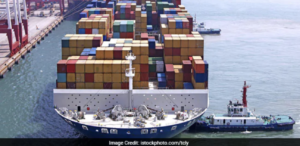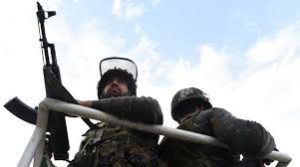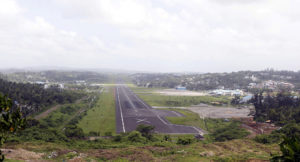Rise of China and its assertive strategic behaviour raise significant international concerns. Xi Jinping, China’s core leader is assiduously working to create alternate security and economic architecture, with Beijing in the leadership role. A well-enunciated ‘China Dream’ that seeks to steer his country into a ‘Great Power’ by 2050, coincides with 100 years of its existence of the People’s Republic of China (PRC).
The ‘Belt and Road institutive (BRI) is Beijing’s de-facto grand strategy that seeks to connect continents and oceans through multi-modal connectivity and strings of economic zones to expand China’s strategic influence in the world. The most significant feature of BRI is – the four transit corridors spanning Eurasia, the CPEC, China Myanmar Economic Corridor (CMEC) and an aspirational China – Nepal Economic corridor that meanders through India’s western and northern flanks.
A vital web of Maritime Silk Route (MSR) spans the Indian Ocean. Gwadar in the Arabian Sea and Kyaukphu in the Bay of Bengal have emerged as the strategic outposts, where the continental and maritime prongs of the BRI converge. China’s growing influence in Myanmar, South Asia and the IOR (Indian Ocean Region) is rapidly changing the geopolitical landscape of the region and consequently shifting the balance of power in China’s favour. India can ill-afford to remain oblivious to emerging geopolitical developments. New Delhi needs to recalibrate and refine its strategy to balance China.
China’s Strategic Forays in India’s Strategic Neighbourhood
Myanmar

Image Courtesy: The Myanmar Times
It is the strategic pivot where India and China’s strategic interests intersect. China signed a MoU with Myanmar in September 2018 to develop multi-modal CMEC (China-Myanmar Economic Corridor) that encompasses construction of $1.5 billion oil and gas pipeline, $1.3 billion for first stage expansion of Kyauphyu Port and $2.7 billion for developing 4,000 acre SEZ, with 70 per cent take of Group of China International Trust Investment Corporation (CITIC). Besides, a 1400 km high-speed railway line is planned, of which, 328 km segment in China has been completed. The CMEC is expected to generate about 100,000 jobs, $ 15 billion tax revenue for Myanmar.
As part of the ambitious BRI project, China is keen to develop Muse-Mandalay Railway Project, create New Yangon Development Project costing $ 1.5 billion (setting up modern towns and industrial parks), three Border Economic Zones and revival of the shelved Myitsone Hydropower Project worth, $ 3.6 billion.
As of 2018, China is involved in developing 126 projects worth $ 15 billion. China has a 30-year long perspective to invest in Myanmar in the hydropower projects, mining sector, energy pipelines, deep-sea port, industrial and IT parks and agriculture sector. China is developing road Kunming, Myitkyina and Pangsau pass on the India-Myanmar border, along the road from Kunming to Bangkok and plans to develop a railway line from Jinghong in Yunan province to Vientiane in Thailand.
South Asia
Pakistan remains the linchpin of China’s South Asia strategy. China leverages Pakistan as a millstone to fix India in the South Asian orbit. Because of the CPEC, China has developed deep interests in Gilgit-Baltistan and has ‘ipso facto’ emerged a de-facto ‘Third party’ in Kashmir imbroglio. The CPEC debt trap will virtually make Pakistan China’s satellite state, ever willing to play the Indian card. China has offered to extend the CPEC to Afghanistan. China, Pakistan, Russia, Iran and Taliban nexus is inimical to India’s strategic interests in Afghanistan.
China is fast eroding Nepal as a strategic buffer with India. Among the multitude of Chinese projects in Nepal, the vital ones are; one railway, two highway, two airports, three border ports, Lhasa-Kathmandu railway and Gyirong and Zhangmu land border port project. China-Nepal Economic Corridor has started taking shape.
The moot point is – can India afford to have an open border with Nepal? The impact of China’s influence on the regional economy and security of the Siliguri corridor needs detailed examination. Beijing is assiduously working to lure Bhutan with a package deal. China is prepared to forego its territorial claims in eastern Bhutan if Thimphu accedes to China’s claim over 269 sq km in western Bhutan (including 89 sq km of Doklam plateau), and open diplomatic and trade relations between the two countries.
Bangladesh, Srilanka and Maldives
All three countries are signatories of MSR (Molten Salt Reactor Project). In Bangladesh, China has invested in about 27 projects worth $13.6 billion and evinced interest in Chittagong and Payra port and creating an SEZ at Anwara, apart from developing power plants, rail, roads, bridges and oil pipelines.
As far as Sri Lanka, China has developed Colombo container terminal worth $1.4 billion, Colombo financial city, Hambantota port, power projects, road and rail connectivity and an SEZ. Likewise, Chinese projects in the Maldives entail airport expansion, construction of Friendship Bridge, lease of Feydhoo Finolhu, for 50 years at $4 million, setting up ocean observation station at Makunudhu and development of a port at Laamu Atoll.
Indian Ocean Region Littorals
 Development of ports is the cornerstone of China’s IOR strategy. The major ports of interest are: Gwadar/Jiwani in Pakistan, Colombo Terminal and Port City, Hambantota in Sri Lanka, Payra Port in Bangladesh, Kyaukpyu port in Myanmar, Melaka Gateway Project and Kuantan Port in Malaysia Khalifa Port in UAE, Aden Container Port and Mokha Container Port in Yemen, Dolareh Port in Djibouti, Mombasa and Lamu ports in Kenya, Dar-es-Salaam and Bagamoyo Port in Tanzania, Beira Fishing Port, Narinda Bay Port and Techobanine Ports in Mozambique.
Development of ports is the cornerstone of China’s IOR strategy. The major ports of interest are: Gwadar/Jiwani in Pakistan, Colombo Terminal and Port City, Hambantota in Sri Lanka, Payra Port in Bangladesh, Kyaukpyu port in Myanmar, Melaka Gateway Project and Kuantan Port in Malaysia Khalifa Port in UAE, Aden Container Port and Mokha Container Port in Yemen, Dolareh Port in Djibouti, Mombasa and Lamu ports in Kenya, Dar-es-Salaam and Bagamoyo Port in Tanzania, Beira Fishing Port, Narinda Bay Port and Techobanine Ports in Mozambique.
China is also eyeing Chittagong Port in Bangladesh, Gadhoo Port in Maldives and Kra Isthmus Canal in Thailand. As per experts, these ports are being developed as bridgeheads for political and military purposes by the PRC owned and politically linked private firms, to create a network of logistics facilities-“first commercial and then military use”. There is a need to closely monitor China’s maritime activities such as surveys, explorations, and setting up of ISR (Intelligence Surveillance Reconnaissance) and communication facilities for maritime domain awareness, port calls and naval exercises culminating into the establishment of rotational/permanent naval bases.
India’s Strategy to Balance China
A buoyant India ought to be a pre-eminent power in South Asia and IOR, a leading power in Asia and an important stakeholder in the evolving international order. The fundamental requirements to propel India’s rise lie in developing Comprehensive National Power and its strategic configuration to realise expanding core interests vis-à-vis China and other competitors.
While India has well-articulated foreign policy focus viz ‘Connect Central Asia Policy’, ‘Go West Policy’ to engage with its strategic neighbourhood, the geopolitical realities such as Pakistan and Iran factors pose constraints in early fructification of these policies. Also, India’s multi-vector interest based engagement, steeped in the belief of strategic autonomy faces a formidable challenge of how to balance between the antagonistic relations: the US and its allies on one side and China-Russia strategic nexus on the other. It is in this milieu that India’s Act Asia policy provides us with the critical window to expand and deepen our relations with South Asian neighbours, Indian Ocean littorals and South East Asia. For the successful operationalization of ‘India’s Act East Policy’ the initiatives discussed in the succeeding paragraphs are paramount.
Security of Siliguri Corridor
It is 200 km long, 17 km to 60 km wide. Its narrowest part called the ‘Chicken Neck’ is mere 20 km x 18 km, straddled between Nepal and Bangladesh. The corridor is a tenuous link with eight northeastern states and shares borders with four countries. It is a critical hub of rail-road, energy pipelines, power grid and sensitive strategic and military installations. China’s design to grab Doklam Plateau, which is at an aerial distance of 40 km, poses direct threat to the Siliguri Corridor. Open borders with Nepal and Bhutan and porous borders with Bangladesh lends to this corridor being vulnerable to a host of asymmetric threats and cross- border crime.
The corridor is also afflicted by sporadic Gorkhaland agitation, sectarian violence and anti-national activities of Kamtapur and Rajbangsi militant groups. The manifestation of hybrid threats in the Siliguri Corridor will have a grave impact on India’s strategic security. Therefore, we need to formulate a comprehensive security mechanism and response to mitigate potential threats. The corridor also provides India and Bangladesh the option of developing an alternate transit corridor through Titalya salient for a connect with the northeastern states.
Sustainable Development and Security of Northeast

Image Courtesy: AFP
The key to the success of India’s ‘Act East Policy’ lies in achieving sustainable security and development of the northeastern region. There is a growing concert of Indian Insurgent Groups (IIGs) such as United National Liberation Front of Western South East Asia (UNLFW), CorCom (Meitei outfits) and an array of Islamist militant groups working in tandem to destabilise the region.
The issue of National Register of Citizenship needs delicate handling lest it spirals into a major internal security problem. Another dimension of security that merits attention is smart and integrated border management. Integrated Inter-State, rapid border infrastructure development, fast-tracking of Trans Brahmaputra multi-modal connectivity will pay handsome dividends in the security and development of the region. The region should be transformed as a fulcrum of net security in the neighbourhood, integration of regional economy and soft power projection. There is a need to create inter-ministerial and inter-agency coordination mechanisms such as Northeast Council and Unified Commands to oversee security, development and diplomacy in a holistic manner.
Engagement with Myanmar
Myanmar shares a border with five countries; Bangladesh (271 km), China (2129 km), Laos (238 km), Thailand (2416 km) and India (1643 km) along with four states. The territory of Myanmar is used by the IIGs (Indian Insurgent groups) to wage a war against the Indian state. The country is rich in energy resources that India needs to mitigate its energy security. Myanmar is the gateway to Southeast Asia through which passes India-Myanmar-Thailand trilateral highway. There is a need to accord priority to upgrade the 80 km long Tamu-Kalewa-Kalemyo Friendship Road, Rhi-Tiddim Road, accelerate work on the Kaladan project, including SEZ, commence India-Myanmar coastal shipping service and renew negotiations on Mekong-India Economic corridor.
India should assiduously work to increase bilateral trade from $2.18 billion (2016-17) to $10 billion in next five years, boost cross border trade through four trading routes: Moreh, Zowkhathar, Lungwa and Pangsau Pass. There is a scope to steeply increase Indian investment from the current $1.36 billion. India has extended to Myanmar development assistance, grant-in-aid assistance of over $1.75 billion.
India must vigorously participate in bids for oil and gas blocks being offered by Myanmar to international companies. In the security arena there exists great scope to strengthen cooperation in maritime security, piracy, terrorism, gun running, and protection of island territories, joint army and naval exercises and capacity building in disaster management.
Shaping the Strategic Environment in the IOR

Image Courtesy: Reuters / Sanjeev Miglani
The first and foremost requirement is to transform Andaman and Nicobar into a maritime strategic hub. The establishment of Island Development Agency (IDA) in June 2017, plans to develop trans-shipment Terminal at Campbell Bay in Great Nicobar, a port at Kamorta Island, extension of Runways at Diglipur, Port Blair, Car Nicobar and Campbell, digital connectivity enhancement, three naval air bases-INS Utkrosh (Port Blair), INS Baaz (Campbell Bay) and INS Kohassa (Shibpur), air force base (Car Nicobar), improvement of tourist facilities, direct trade with Aceh Province Of Indonesia and setting up a JWG to develop Sabang Port in Indonesia, are the steps in the correct direction.
Other significant decisions are to enhance mission based deployments of Indian Navy, signing of mutual logistics arrangements with USA, France, Singapore, Oman, and hopefully, in the near future, with Japan. India’s intent to establish a listening post in Madagascar, developing berthing facility and airstrip at Assumption Island (Seychelles) and Agalega islands in Mauritius need a concerted push. India has revamped cooperation on Maritime Domain Awareness, is helping littorals in networking Coastal Surveillance systems and has entered White Shipping Agreements with various stakeholders.
India’s contribution in Indian Ocean Rim Association (IORA) and Indian Ocean Naval Symposium (IONS) is well acclaimed and these frameworks offer scope for enhancing maritime security and developing blue economy in the Indian Ocean, with India in the leadership role. There are promising prospects in Integrating Delhi-Mumbai-Bengaluru-Chennai with regional corridors, BBIN (Bangladesh, Bhutan, India, Nepal Initiative) and BIMSTEC (Bay of Bengal Initiative for Multi-Sectoral Technical and Economic Cooperation), develop ports as part of Sagarmala Project, establish FTAs (Free Trade Agreements) in the IOR, revival of historical routes: Mausam, Spice Route and Cotton, as enunciated from time to time.
Conclusion
India and China are destined to compete for resources, footprints and influence. An aspirational India cannot afford a widening gap in the Comprehensive National Power vis-a-vis China. India will have to work with a great sense of urgency to bridge the strategic gap, develop and exercise leverages to reclaim strategic influence in the neighbourhood. Speedy operationalization of ‘Act East Policy’ is a sine qua non to balance China in South Asia and IOR. India must expediently address security and development issues in the northeast, deepen engagement with Myanmar and assume a leadership role in shaping the strategic environment in the IOR. Comprehensive capacity building, deft diplomacy in strengthening strategic bilateral and multilateral engagements and offering alternative models of growth and development to neighbours will attract other countries to join partnerships for balancing China. Finally, India must develop credible deterrence and war fighting capabilities to protect its sovereignty and to promote its expanding core interests.
The article was originally published at Bharat Shakti
https://bharatshakti.in/net-assessment-of-chinas-strategic-forays-in-indias-neighbourhood/

